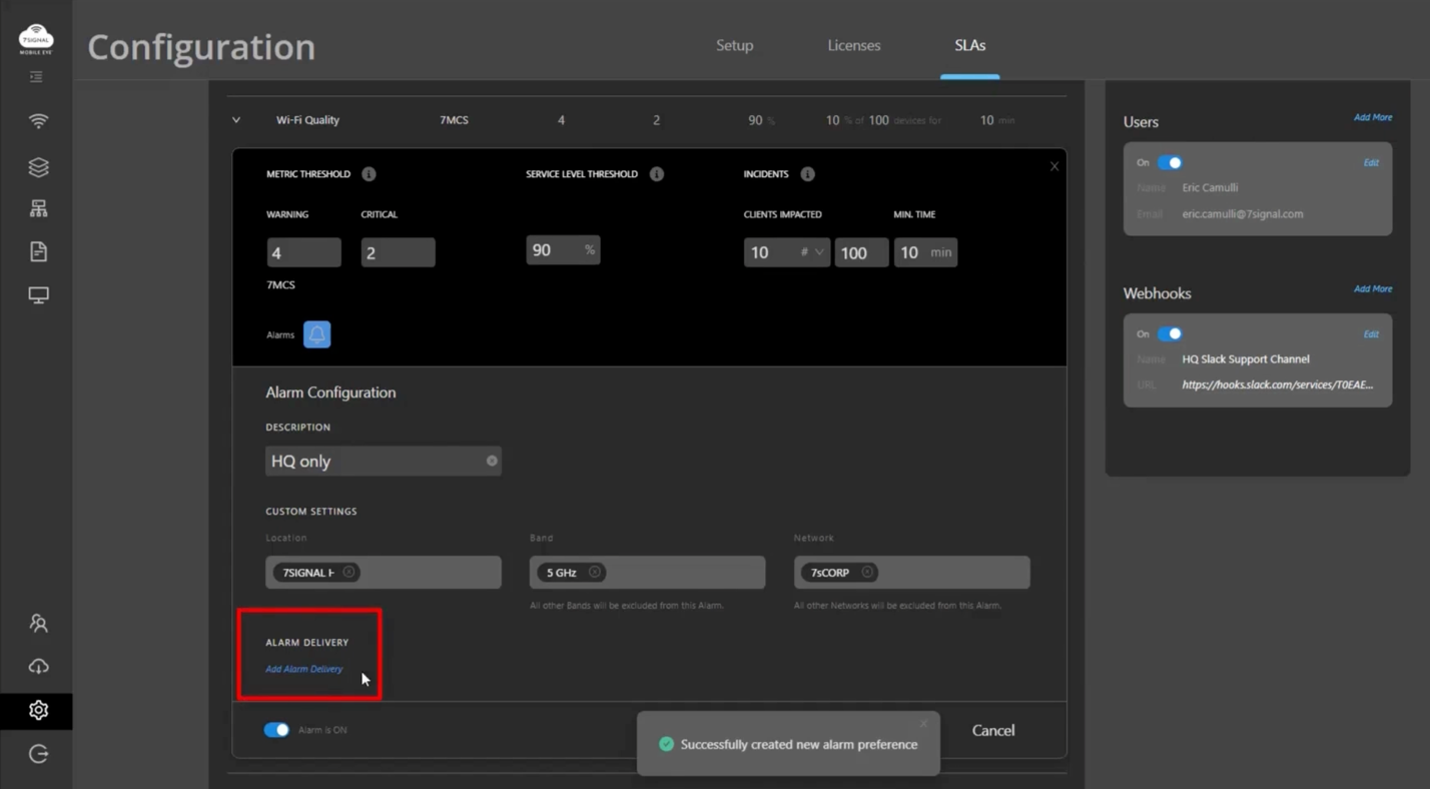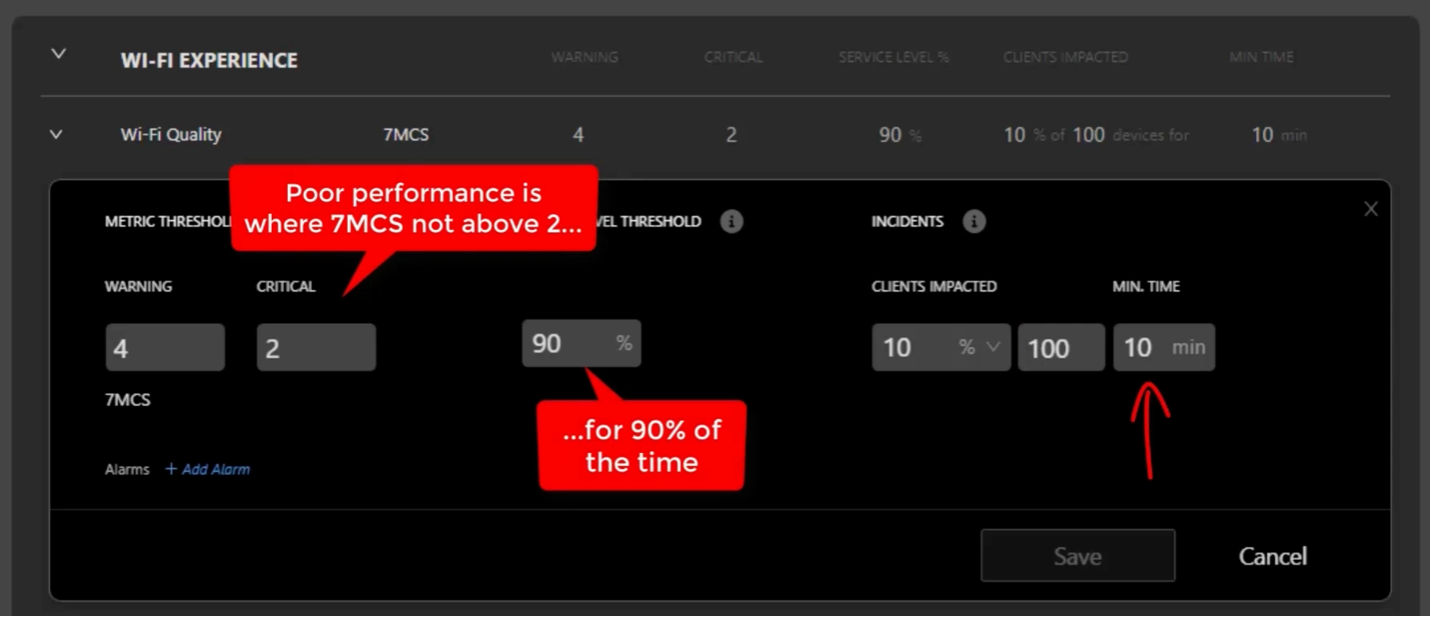Blog
In today's fast-paced digital world, the availability and reliability of enterprise Wi-Fi is crucial for businesses success. We’d like to believe that Wi-Fi is always up and running perfectly but that is usually not the case. We’ve all heard it (or said it ourselves) “the Wi-Fi here sucks”. In this blog, we’re not going to discuss the cause of bad Wi-Fi. We are talking about alerting you when there is a problem.
Businesses all over the world, rely on the 7SIGNAL Platform to provide real-time insights into the performance of their Wi-Fi. However, to some, the data provided by monitoring and optimization systems can get overwhelming with the sheer volume they collect, and it is easy for critical issues to get lost in the noise. That's where alerts and alarms come in – these alleviate the need to open a dashboard and dig through data.
The 7SIGNAL Platform offers alerts and alarms from both its sensors and agents. (Formally known as Sapphire Eye® and Mobile Eye® respectively)
Alerts and alarms are crucial components of a Wi-Fi optimization strategy as they provide real-time notifications to key stakeholders when something goes wrong with the network. These notifications are usually sent through various channels such as Slack, Teams, or email, ensuring that the right people are alerted at the right time, regardless of their location.
Set up is easy.
In this example, we show how easy it is to add users and web-hooks into the platform.

The importance of not having to refer to a dashboard cannot be overstated. In the event of a critical issue, time is of the essence, and every second counts. An optimization strategy that relies solely on a dashboard can delay the response time and increase the risk of damage to the system or data loss. Alerts and alarms provide an instant notification that something needs attention, allowing stakeholders to respond to the issue quickly and efficiently, minimizing downtime and potential losses.
7SIGNAL can alert or alarm on multiple incidents or SLAs on the WLAN or endpoints.
In this video, we demonstrate triggering alarms based on 7MCS which is an algorithm deriving from MCS calculations – giving an easy to understand user experience score.
In this example, we show how to set the SLA thresholds using 7MCS for endpoints. A simple and effective way to monitor digital experiences and Wi-Fi quality.

Other popular alerts and alarms, include:
(Our customer top 10)
- 7MCS – Our digital experience score
- Beacon availability – Access Point radio visibility
- Radio attach success rate – The ability of a user to associate to the access point radio
- DHCP success rate – The ability of a user to get on the internet
- Managed access point not responding – Clients are unable to find an access point
- Total EAP authentication success rate – Server cannot authenticate clients
- End to end connectivity loss – Cloud or server cannot reach the defined endpoint
- Excessive channel changes – Access point changes channels too frequently causing users to disconnect
- Regular DNS query – Client is not able to resolve DNS names
- Retransmission rate exceeded – Retransmission rate exceeds set threshold.
Real-time notifications, alerts and alarms provide a centralized view of the Wi-Fi’s health, highlighting critical issues that require attention. This view allows businesses to monitor the system's performance without having to refer to a dashboard continually. By providing a summary of the Wi-Fi health, alerts and alarms help stakeholders stay informed, allowing them to make data-driven decisions that improve the system's overall performance.
Once an incident is reviled through a notification, the dashboard can be used to dig into the root cause of the issue. In this case, an issue is reviled on a user working from home. 7SIGNAL is the only solution on the market, that can identify root cause with both enterprise and WFH networks.

Alerts and alarms provide businesses with a proactive approach to managing their systems. Instead of reacting to issues after they occur, alerts and alarms provide an opportunity to respond to potential issues before they turn into critical problems. For example, a sudden spike in traffic could indicate a potential issue that, if left unaddressed, could result in downtime. With alerts and alarms, businesses can take proactive measures to address the issue before it impacts the system.
To get a free trial, click here.